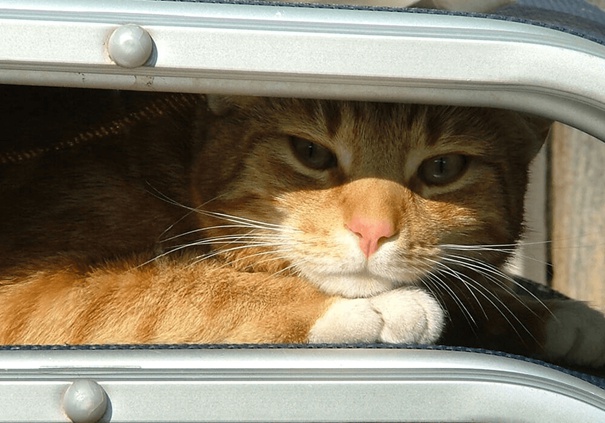My dog has been missing; will they come back?
A missing dog will worry any pet parent; if you can’t find your pup, you may wonder what to do next. You may ask if your dog is coming home and how long it can survive away from home. These are all normal concerns. This article shares what to do when your dog goes missing and answers your questions: "When dogs run away, where do they go?”

Reading time : 8 min
A missing pet can be an unfortunate part of pet ownership, as the American Humane Society says approximately 10 million pets go missing each year in the United States. When you have a missing dog, you’re understandably scared, worried, and confused about what to do next. Unlike cats, dogs can have a wide variety of distances they might travel away from home. Dogs vary in size, so sometimes how far a missing dog travels from home depends on their size, age, and strength.
TOPICS
Why do dogs go missing?

Why hasn’t my dog returned home?
A dog can go missing for a variety of reasons. Like cats, dogs may run away out of fear. Dogs can react strongly to startling noises like firecrackers and other loud sounds. Your dog may also have separation anxiety. If you go to work or venture out, your dog may get nervous and run to find you. It’s also possible for your dog to react on instinct and their prey drives, such as chasing a squirrel or the neighbor’s cat. They may respond to a potential mate in the neighborhood and roam off to find them.
Sometimes dogs go missing simply out of boredom. They lack sufficient stimulation and entertainment, so they wander off searching for a new playmate. You may have a missing dog because they’re in a new environment, perhaps on vacation or after a move, and have too much curiosity. They may also return to their old home if the new surroundings aren’t safe. Stress or illness may also cause your dog to run away.
If a dog goes missing, will they come back?
Dogs can and often do return to their owners when they run away. One study about lost pets reuniting with their owners found that 93% of lost dogs were recovered, compared to 74% of lost cats. Like our feline friends, dogs also have strong navigation abilities. While cats likely use the earth’s magnetism to navigate their way home, dogs rely heavily on their noses. Dogs have powerful senses of smell and can pick up scents across miles. A missing dog may pick up your scent across 11 or more miles, successfully following it home. Animal behaviorists say that dogs sift through all the scents in their area, pinpointing familiar smells.
With more than 100 million sensory receptor sites in their nasal cavity, dogs rely more on their sense of smell than humans, who only have 6 million scent receptors. Their brains also feature a bigger portion devoted to interpreting and analyzing smells, with the ability to smell 10,000 to 100,000 more times than humans.
When dogs run away, where do they go?
Dogs are, by nature, social creatures, and if they run away, they may seek out other dogs and humans. If a dog runs away, they may visit spots in your neighborhood, such as a local dog park or your friend’s house. If scared by fireworks or other loud noises, a lost dog may seek comfort under a deck, in the woods, and in other quiet areas without humans. If lost at night, a missing dog may hide under a bush, shrub, or car.
Find out the 5 most important steps to find your lost pet
All the information you need to find your beloved companion
How long can missing dogs survive?

As it varies, we don’t have a definitive answer for how long a missing dog can survive. A dog’s survival ability varies according to their health, temperament, and breed. The one factor that affects all lost dogs’ survival rate is their access to food and water. A healthy dog can survive without food for up to 5 days if they have access to water. A missing dog needs water, regardless of their health, and can only survive for a few days without proper hydration. After several days without water, your dog is severely dehydrated, and organ failure sets in.
How to stop my dog from running away?

Have your dog spayed or neutered
One of the best ways to stop your dog from running away is with a spay or neuter. If your dog is spayed or neutered, it won’t act on its mating desire. Dogs that pick up the scent of another canine in the area may run away to find a mate. Your veterinarian spaying or neutering your pet will encourage them to roam less. Dogs also live longer, healthier lives when spayed or neutered and enjoy lower cancer risk. You also help control overpopulation in your area.
Train your dog to respond to commands
Some simple obedience training and commands can reduce your dog's chance of running away. Invest the time, teach your dog to sit, stay, and heel, and come when called. If they break free from their leash or accidentally slip out of a door, you can call them back or have them heel and wait for you.
Clicker training or GPS trackers with vibrating or ringing features are a great way to engage and teach your dog to obey. You only need to create positive reinforcement for your dog once they do a task or respond a certain way. Once you start training your dog, you may be surprised at their intelligence: some canine experts say dogs can recognize up to 165 words.
Use a GPS pet tracker to monitor your dog
A dog GPS tracker lets you monitor your dog’s movements. GPS trackers are small and fit securely to your pet’s collar. Their sleek design allows your dog to eat, drink, and play easily without bother. If you have a missing dog with a GPS tracker, you can follow their movements and reunite with your pet. You must choose GPS tracking in real-time and without limited distance to do so.
Walk and play with your dog daily
You should ensure your dog gets plenty of exercise time, as pent-up energy could lead them to run away out of frustration. The dog-human bond is very strong, and dogs need stimulation and attention from their beloved owners. Animal experts recommend playing with your dog for at least 30 minutes daily. If you have a puppy or a particularly excitable breed, you must spend more time with your dog to make sure they have the attention they need.
When you leave the house, your dog may have separation anxiety or become anxious. You can reduce their stress with toys and create a peaceful environment. Leaving a radio or TV on, or playing white noise, can help keep them calm, while an interactive toy that dispenses treats offers a good distraction. Ensure they have a soft, comfortable bed or place to feel like they have a “safe” zone even when alone.
Know your breed’s needs
You should know your dog’s breed personality and needs if you have a purebred dog. Some breeds, such as the pug or Bichon Frise, tend to be more relaxed and lazy, while others, such as a Border Collie, have high energy levels. If you have a herding dog and don’t give him enough enrichment, he might act on instinct and run after something in your yard. Breeds like the Labrador Retriever and the Jack Russell Terrier are likelier to run away, so their owners must work hard to meet their needs. Labradors are very curious and like to explore, while the Jack Russell Terrier can enjoy climbing into small holes or spaces thanks to their history of hunting foxes.
If you own a purebred dog, make sure you can meet their unique needs in terms of exercise, play, attention, and space. You can research each breed on the official AKC website and compare breeds.
Supervise your dog
Some dogs are simply rambunctious; they may leave the yard and wander away from home if given a chance. If you have a dog that likes to roam, lessen the chances of them running away by supervising them when they’re outside. You may consider adding a fence to your backyard to keep your pet safe. Keep your pup on a long leash if you don’t have a fenced yard. You should also keep them on a leash when in public, such as at the park or on your beach. Only two states have a leash law, but most cities have a public ordinance requiring leashed dogs, so always follow local rules.
Do you need help to find your pet?
In this guide, you will find 5 key steps to follow to conduct an effective search and to find your pet as soon as possible.
How to Find My Lost or Missing Dog?

Search your house and neighborhood well
If you have a missing dog, you should immediately start a search within 24 hours. Have your dog’s favorite toy or blanket in hand, along with a bag of treats, and shake it occasionally as you call your dog’s name. Look around your home for any spots where your dog may be trapped, such as your basement, attic, cellar, or garage. Don’t skip popular napping spots like under a bed or in a basket. You should also look under the deck and crawlspace if you have one.
Once you thoroughly search your house and backyard, start a neighborhood search. Look at dog parks, woods, and anywhere that may interest your dog. Let your local friends and family know that your dog is missing so they can keep an eye out. You should search during the day but try to search at night as well. Nighttime is one of the best times to search for a missing dog because there’s often less commotion and traffic than in daytime hours. A lost dog is often more active at dusk and dawn. Grab a flashlight and look around carefully.
Contact authorities and animal rescue
Animal shelters, animal control, and rescues take in lost and found pets. If your dog goes missing, make a report with your local shelter, the police, and any animal rescues near you. The people at these organizations come in contact with animals constantly and can keep an eye out for your dog. Visit the animal shelter website, as it may have a form to report a lost or missing pet, and check the website regularly for any new animals they add.
Share on social media
Social media is a great way to quickly get out a message about your lost dog. Post on your local city or neighborhood Facebook group and share a Lost Pet announcement on NextDoor. You can also post a free notice using Pawboost, a free website that mobilizes animal lovers in your area to find your lost pet.
Make lost dog flyers
A flyer will let you attract the attention of hundreds of people a day. You can create a missing dog flyer by including your dog’s name and description, a recent picture of your pup, and your contact information. You should also put your dog’s last known location. Take a copy of the flyer to your veterinarian and place it around street poles and community bulletin boards in your area.
Conclusion
If your dog is missing, you aren’t alone. You should act quickly and consider all the places your dog may go. The first 24 hours are crucial, but keep searching after the first day. Conduct a thorough search of your neighborhood, and don’t forget to create flyers for your missing dog. Ask your neighbors to join your search and share your dog’s picture and information on social media. Visiting a lost pet website and calling your local animal shelter are good ways to increase your chances of reuniting with your dog.
To reduce the chance your dog runs away when off-leash, take the time to train your dog to respond to simple commands. You can also use a dog GPS tracker to locate them.
Continue reading our guide
This article is part of a complete guide on the subject. Do not miss the next chapters.
How to find a lost pet ?
Discover the 5 most important steps
All the information you need to find your beloved companion
